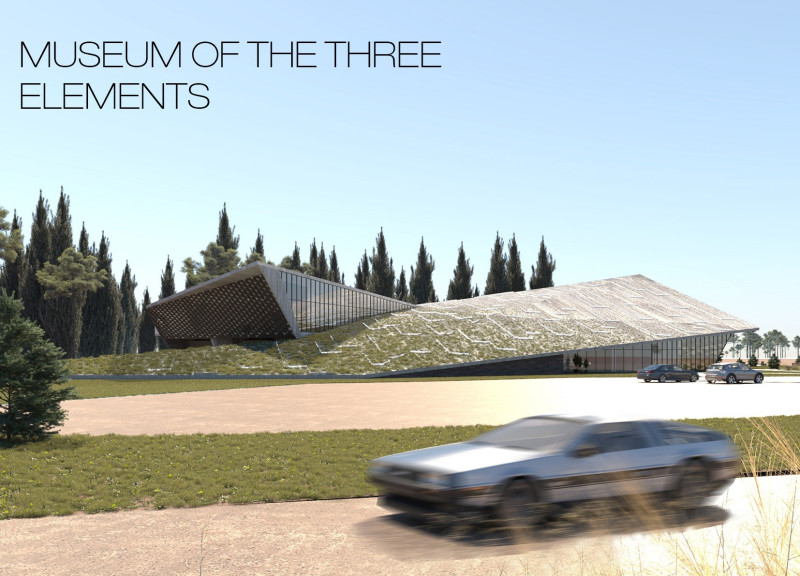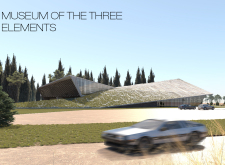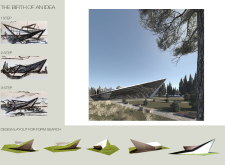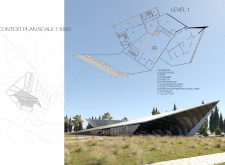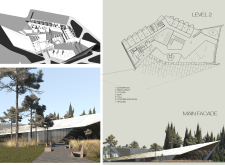5 key facts about this project
The project aims to serve as a cultural hub, supporting both local artists and the community through various programs and events. It includes functional spaces such as spacious galleries for art exhibitions, workshop areas, conference rooms, and dining facilities, all designed to facilitate dialogue between creativity and environmental awareness.
Unique Design Elements
The architectural design presents several features that distinguish it from conventional museum structures. The flowing roof design is a key aspect, echoing the undulating forms of the surrounding landscape and enhancing the building’s integration with its site. This approach not only emphasizes visual continuity but also aids in water management by directing rainfall to strategically placed gardens.
The use of materials is another vital aspect of the project. Limestone offers durability and a natural finish, while extensive glazing promotes natural light penetration into the interior spaces. This careful selection creates a balance between solid and transparent elements, enhancing the visitor experience and energy efficiency. Metal cladding further adds structural integrity while contrasting with the organic forms of the building.
Sustainable Features
The incorporation of a green roof system is a notable highlight of this project, promoting ecological benefits such as insulation and biodiversity. This design approach minimizes the building's environmental footprint and serves as a living exhibit, educating visitors about sustainable practices. Additionally, the strategic placement of outdoor spaces throughout the site fosters a connection between indoor and outdoor experiences, allowing visitors to engage with nature directly.
For those interested in a thorough understanding of the project, detailed architectural plans, sections, designs, and concepts reveal further insights into the Museum of the Three Elements. Exploring these materials will provide a comprehensive overview of the architectural ideas and functional specifics driving this innovative project.


